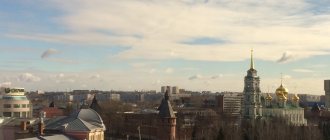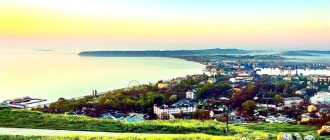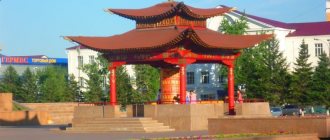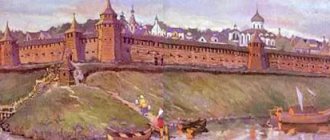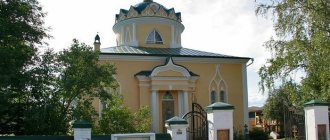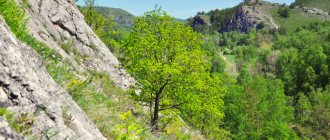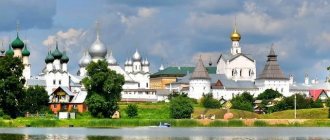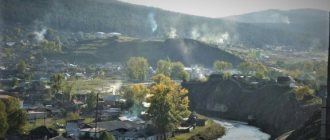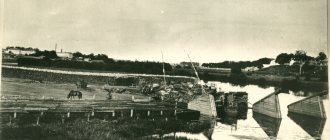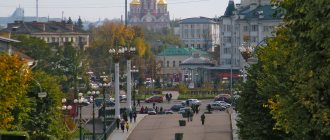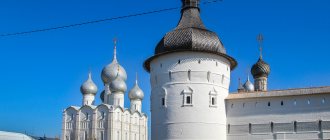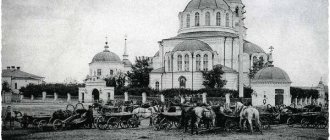Tula Kremlin
If you don’t know where to go in Tula, you definitely shouldn’t miss this place. Throughout its history, the Tula Kremlin, which for many centuries served as the city’s defense from enemy raids, has never passed to foreign invaders. In 2022, the famous fortress turns 500 years old. Among the exhibits of the Tula Kremlin museum complex you can see craft tools, household items, weapons, coins, jewelry and other rarities that introduce visitors to the way of life of many generations of the inhabitants of this outpost. The educational quests, games and quizzes that are regularly held here are dedicated to the same purpose.
It is in the Kremlin that the mark of the center of Tula is located, where all the main streets of the ancient city began. The architectural ensemble of the Kremlin consists of the Holy Dormition and Epiphany Cathedrals, the building of the first Tula power plant and shopping arcades. On the territory of the architectural complex there is a museum of weapons and a museum of folk decorative art. The model of the Tula Kremlin, presented in the permanent exhibition, is always of particular interest to visitors. Despite the fact that the real size of the object is reduced by 130 times, streets, houses, and temples can be easily distinguished here. All the defensive structures of the fortress are clearly visible. An interactive help system complements the fascinating narrative of times gone by.
Main attractions of Tula
Tula Kremlin
In the center of many ancient Russian cities, historical fortresses have been preserved, which invariably attract the attention of tourists. Tula is one of these cities and is rightfully proud of its Kremlin. This is the main attraction, the condition of which is carefully monitored - the area is clean and well-groomed. It is very pleasant to walk around the Tula Kremlin, studying historical and architectural monuments, or just relax, sitting on some bench.
Territory of the Tula Kremlin
According to reviews from tourists, two hours is enough to see all the sights of the Kremlin. What exactly is worth seeing? Firstly, the ancient fortress is interesting in itself: the walls and towers have retained their appearance since the 16th century without significant changes. The three-meter walls of the Kremlin stretch along the perimeter for about a kilometer. Their strength is ensured by a fairly strong foundation, extending more than 8 meters into the ground. The materials used to build the walls were red brick and white limestone. The architecture of the fortress combined both native Russian construction styles and borrowed ones. An example of European influence is the so-called “dovetails” that line the walls. These elements have traditionally been popular among Italian architects.
In addition to visiting the walls and towers of the Tula Kremlin, it is worth exploring other buildings included in its architectural ensemble. This is the Holy Assumption Cathedral, built in the 18th century, and the Epiphany Cathedral, built in the 19th. Also of interest are the shopping arcades and the building of the city's first power plant.
Holy Assumption Cathedral
While walking around the Kremlin, you will have the opportunity to purchase memorable souvenirs in local artisan shops. There are also food stalls for those who want to refresh themselves. From time to time, the Tula Kremlin hosts various activities for tourists, including master classes.
Assumption and Epiphany Cathedrals of the Tula Kremlin
As we have already written, there are two cathedrals on the territory of the Tula Kremlin. One of them is Uspensky
, is located in the very center of the ancient fortress. It was built in the 18th century with funds raised by Tula merchants. But before that there were other temples in the same place. First, in the 16th century, a wooden structure appeared, and then a stone one. None of them survived. But the Assumption Cathedral stands strong and arouses great interest among tourists. It has original architecture, and unique icons are stored inside. The history of the temple is also interesting. For some time, the hearse with the body of Emperor Alexander I was located in it, and in the same cathedral the militias who went to fight Napoleon received blessings.
Assumption Cathedral in Tula
Another religious building, located in the Tula Kremlin, does not currently belong to the church. This is the Epiphany Cathedral
, which now houses
the Museum of Weapons
. Quite an unexpected change of role for a building erected in the mid-19th century. But the building is no stranger to change; during the Soviet period of history it underwent extensive reconstruction.
Epiphany Cathedral
Monument to Tula gingerbread
Tula gingerbread, as befits one of the main symbols of the city, took pride of place in the very center - on Lenin Square. Of course, we are not talking about the sweetness itself, but about its sculptural version. The monument was erected in 2014 and has since been popular among tourists. It would be a mistake to come to Tula and not take a photo with a giant bronze gingerbread.
Monument to Tula gingerbread
Monument to Lefty
Many people have heard about the legendary Lefty. But not everyone knows that this character, created by writer Nikolai Leskov, is a symbol of Tula. And since it’s a symbol, it means a monument has been erected. Following this logic, the city decided to install a sculpture dedicated to the talented master. Initially, it appeared on the territory of the Tulamashzavod in 1989, but 20 years later the monument changed its place of registration. Now it is located on the embankment of the Upa River.
Left-handed - a symbol of working skill
Monument to Peter I
Peter I made a significant contribution to the history of the city. It was by his decree that the construction of a state-owned arms factory began in Tula. This enterprise, which began operations back in 1712, is now considered the oldest arms factory in the country. Needless to say, the residents remember very well, thanks to whom Tula subsequently received the title of weapons capital. That is why a sculpture of the Russian emperor appeared in the city. First, it was installed on the territory of that same plant, and then moved to a park located nearby so that anyone could have access to it.
Monument to Peter the Great
Tula Weapons Museum
This museum is one of the must-visit places in Tula. The new building, located on Oktyabrskaya Street, has a unique architecture and is shaped like a heroic sword, while the other, ancient one, is located on the territory of the Tula Kremlin. The rich collection of exhibits at the permanent exhibition helps trace the evolution of firearms and bladed weapons from the 16th century to the present day.
The museum is equipped with the most modern technologies for displaying exhibits. The installations placed here create the effect of personal presence in a trench or weapons workshop. A visit to this place is an excellent option for a family cultural trip: a fascinating excursion into the legendary past of domestic and foreign weapons will be of interest to both adults and children.
Museums of Tula
Next, we suggest that you familiarize yourself with an overview of Tula museums, which display a huge number of exhibits. By studying these artifacts, you can study more deeply the history of the city and the region.
Museum "Tula Gingerbread"
The most “delicious” will definitely be a visit to the Tula Gingerbread Museum. Already from the name it is clear that here you will be presented with the history of the main sweet and symbol of the city. Here they will tell you and show you the secrets of producing the legendary Tula gingerbread cookies. The museum's exposition is housed in two halls, and among the exhibition objects there is an abundance of a wide variety of gingerbread. There are personalized ones, custom ones, and gingerbreads that were baked for special dates or holidays. You can even see a 50-kilogram gingerbread, which has no analogues in the world. All these are not just sweets, but real exhibits that reflect the history and culture of the region. Considering that many gingerbread cookies have texts and images, they can even be read like a book. An educational historical book.
Inside the Tula Gingerbread Museum
As we wrote, this is the most delicious of all the museums in Tula, and not only because you can look at the sweets. Here they will give you a taste. Not those that are exhibits, but others, freshly baked. They are made directly in the workshop located at the museum. Tea drinking will be a great end to the excursion.
Weapons museum
The local weapons museum is called one of the oldest museums in the country. It reflects the many years of skill of Tula craftsmen and blacksmiths, who could create not just a tool, but an entire work of art from an ordinary piece of iron. In these parts there were deposits of brown iron ore, which made the location of the city very favorable for such production.
The building of the Tula State Museum of Weapons
Since 2012, a new museum building has been operating in Tula, which is located in the Zarechensky district, on the Dreyer embankment. The facade of this building has an unusual shape - the shape of an ancient helmet. The museum presents the exhibition “History of small arms and bladed weapons from the 14th century to the present.” It is complemented by “active” information stands that operate using touchscreen technology. This is very convenient for visitors, who will definitely appreciate the museum's modern approach to viewing the collection. With the help of an electronic assistant, you can familiarize yourself with the history of the creation of weapons, how they were used and how they were improved.
Museum exposition
In 2014, the exhibition “Steel Guardians” was launched. This is a presentation of Russian military equipment created in the second half of the 20th century. All weapons can be seen today, the exhibition is still open.
Museum "Tula Samovars"
We all know the truth that you shouldn’t go to Tula with your own samovar, because there are already enough of them here. You can see this at the Tula Samovars Museum, one of the most popular museums among tourists. It began its work in 1990 and over the past years has become very popular with city guests.
Its exhibition reflects the main stages in the development of local samovar production, from the end of the 18th century to the present. A significant place in the museum is occupied by memorial complexes created in honor of representatives of the real samovar dynasties - the Fomins, Shemarins, Batashevs.
Exhibits of the Samovar Museum
One of the museum's halls is organized very interestingly. It looks like a P.I. store. Kozlov, one of the famous local confectioners of yesteryear. The creators of the museum tried to recreate the atmosphere of this trading establishment.
The halls of the museum display samovars of various shapes and sizes. There are very tiny ones that can hold only a couple of drops of water, and there are also giants like a 70-liter pantry samovar. Here you can also see unique items like “children’s samovars”, which were presented to the family of Nicholas II, or the samovar of the Lisitsyn brothers, the owners of the first samovar workshop in the city.
Museum "Old Tula Pharmacy"
Fans of historical surroundings will be interested in looking into the old pharmacy building, which was erected at the end of the 19th century. The establishment operated as a pharmacy until 2011. Now you can’t buy medicine here, but you can explore various collections dedicated to witchcraft and herbal medicine. The exhibition display cases display elements of traditional medicine and pharmaceutical utensils in which medicines were previously prepared. They also introduce visitors to how pharmacists were trained in former times, and also conduct various master classes.
Interior of the pharmacy-museum
Museum "Tula Antiquities"
In Tula there is a branch of the Kulikovo Field museum complex. It is called “Tula Antiquities”, which accurately reflects its content. The exhibition includes an immersion into the historical environment of the 16th-18th centuries, into the life of local craftsmen, as well as into the atmosphere of the famous Battle of Kulikovo. Basically, the museum's collection is made up of finds that were made by the Tula archaeological expedition in the 90s of the 20th century. Another name of the museum is the Historical and Archaeological Museum named after N. I. Troitsky.
The Museum of Antiquity will be interesting for both children and adults
Museum "Necropolis of the Demidovs"
Once upon a time, the Demidov family was known far beyond Tula. Representatives of this legendary dynasty showed themselves in a variety of fields: as travelers, as writers, and as successful industrialists. The Demidovs were also actively involved in charity work. The opening of the memorial complex “Necropolis of the Demidovs” was timed to coincide with the 340th anniversary of the birth of Nikita Demidov. This event took place in 1996. The museum is located at st. Demidovskaya, 9. It is open all days except Monday. If you are interested in learning the history of this famous dynasty, a guide will come to your aid and will also tell you about places associated with the Demidov family.
Relics of the Demidov family
Museum "Tula Gingerbread"
In this museum you can get acquainted with the history and secrets of making the famous Tula gingerbread cookies, which have long become one of the brands of this city. A fascinating exhibition will tell you about the traditions and features of Russian gingerbread production and demonstrate a rich assortment of these products. You will see unique gingerbread cookies in a wide variety of shapes, sizes and designs, including the largest and smallest exhibits, and also watch the baking process. And, of course, you will have the opportunity to try the freshest aromatic delicacies and purchase a delicious souvenir as a gift to your loved ones. In addition, at the museum you can order gift gingerbread cookies for birthdays and other holidays.
What to bring from Tula
The choice does not seem to be great, but it is not so. In addition to gingerbread cookies, which are definitely worth buying, in different sizes and shapes, you can also buy other sweets. In Tula they make wonderful marshmallow - Belevskaya from honey, nuts and berries. And Suvorov's sweets from the local factory are well known outside the city. They are also made from natural ingredients: nuts, dried fruits and juices.
In addition to goodies, you need to bring a samovar from Tula. Which to choose? Any, be it for a large feast or a small decorative one that will decorate every kitchen. Or even a fake one; souvenir shops sell these too. Tula accordions, souvenir guns and whistle toys - this is a short list of souvenir purchases in this amazing city.
Samovar Museum
The museum's exhibition presents unique examples of samovars, from miniature ones (the size of a thimble) to giant ones that can hold 70 liters of water, as well as ancient vessels with a rich history. The collection contains exhibits made from non-traditional materials - clay, porcelain, birch bark and even caramel. The shapes and designs of many samovars are extremely diverse and original.
Visitors can see that with the help of skillful finishing a samovar can be turned into a real work of art. Here you can see tools for making samovars, household items from different times associated with the culture and traditions of tea drinking, awards received by craftsmen at international exhibitions. Guests will learn everything about the stages of development of Tula samovar production and the famous dynasties associated with it.
Central Park P. P. Belousov
Located in the city center, the park is one of the ten largest natural areas in Europe. A huge landscaped area with extensive infrastructure attracts both city residents and numerous tourists - after all, it is a real decoration of the city. It's hard to believe that at the end of the 19th century there was a large garbage dump in its place. At the initiative of the sanitary doctor P.P. Belousov, the first trees of the new park were planted here at the end of the 19th century.
This place can be visited in Tula by both lovers of quiet, contemplative walks, and those who prefer active recreation. Adults and children enjoy visiting exciting attractions, a chess town and an equestrian center, playing football and basketball, riding bicycles, and in winter - skiing, skating and sledding (after all, this equipment can be rented). The park also has a pond with a clean, equipped beach. Not only guests feel comfortable here, but also the “indigenous” inhabitants: almost tame squirrels and duck families leisurely walking along the alleys, as well as residents of the mini-zoo: foxes, roe deer, pheasants, peacocks, swans and many other animals and birds.
What to see in Tula in 1 day on your own
The city is exceptionally good because it is easy to get around without a guide. You won't be able to get lost or miss something important, even if you want to. Everything here is close and compact, and one starts getting acquainted with the city, of course, from the Kremlin.
The Tula Kremlin is a perfectly preserved 16th-century building that differs from its counterparts in other ancient cities. The Tula Kremlin was not built in a hurry before an enemy raid, but in a balanced, thoughtful manner, according to a regular plan. Therefore, it is absolutely logical, regular rectangular in shape, neat both inside and outside.
Its high red brick walls are crowned with turrets and battlements in the shape of a swallowtail. Historians believe that Italian craftsmen were involved in the construction, who gave the defensive structure an elegance uncharacteristic of the 16th century. Another difference is that it is located not on a hill, but in a lowland, so you won’t be able to contemplate the surroundings from the fortress wall. But you can devote time to exploring what is within the walls of the fortress. And here are powerful towers, two of which house museums, and the oldest Tula churches.
Assumption Cathedral . This is a majestic building from the 18th century, located on the territory of the Kremlin. You need to enjoy its appearance from afar in order to see it in its entirety. It is worth taking in the light walls, the gilded domes, and the rich decor with elaborate bas-reliefs and ornaments. It’s amazing how an Orthodox church can so closely resemble either an elegant box or a fairy-tale palace. Nevertheless, this is the current and main temple of the local diocese and one of the main historical sites of Tula. It is impossible not to notice that the cathedral is in perfect condition. It is beautifully restored and is perceived as the heart of the Tula Kremlin.
pixabay.com/
Epiphany Cathedral . This ancient building is also located in the Tula Kremlin and is also included in the cohort of interesting places in Tula and the region. Built at the beginning of the 19th century, it was not used for its intended purpose for long. In Soviet times, the Orthodox church was turned into either a palace for athletes or a flying club. The building was mercilessly rebuilt, thereby changing its original appearance beyond recognition. In the 70s, they decided to place a weapons museum here, and to this day, part of the famous exhibition is located in the already restored cathedral.
Elegant shopping arcades built in the 19th century have also been preserved on the territory of the Kremlin. And the first city power plant, which does not fit into the appearance of the complex at all. To explore all this, you will need at least four to five hours, and only then you can go for a walk along the city streets.
Not far from the Kremlin there are other interesting ancient buildings. This is the Church of the Annunciation, which is barely younger than the Kremlin walls and is a functioning temple. These are two nearby churches of the Assumption Convent, the view of which you can admire and go further to the Nikolo-Zaretsky Church . Its architecture may not surprise you, but its purpose is unusual for Russian cultural traditions. The temple was built by the famous Tula dynasty of industrialists, the Demidovs, as a necropolis. And today it serves as a tomb for several generations of a once rich and powerful family.
Yasnaya Polyana
The world-famous Yasnaya Polyana estate is located 14 km from Tula. This place is famous for the fact that L. N. Tolstoy was born here, lived most of his life and was buried here. Beautiful nature and his beloved home inspired the writer to create brilliant works. During the Great Patriotic War, the museum was looted by invaders, and the writer’s house was set on fire, but, fortunately, the fire was extinguished in time. It took many years of restoration work to put the estate in order.
Today Yasnaya Polyana is a world-class memorial reserve. Here, not only buildings with authentic furnishings of that time have been preserved, including personal belongings and a rich library, but also the atmosphere of the time when L. Tolstoy strolled along the picturesque alleys, pondering his new books. The museum complex consists of Tolstoy's house, Volkonsky's house, Kuzminsky outbuilding, bathhouse, mill and other buildings.
What to see near Tula
Museum-estate of L. N. Tolstoy “Yasnaya Polyana”
Anyone who is at least a little familiar with the biography of the writer Leo Tolstoy is familiar with the name “Yasnaya Polyana”. It was there that the classic of Russian literature created his masterpieces: “War and Peace”, “Anna Karenina” and other brilliant works. Now Tolstoy’s estate is a museum-reserve. It includes not only the building itself and the courtyard, but also gardens, fields, forests and other places, one way or another connected with the writer’s biography.
Museum-Estate of Leo Tolstoy
Among the architectural objects, in addition to the houses of Tolstoy and Volkonsky, the following have survived to this day: a stable, various outbuildings, an entrance tower, a house in the garden, Tolstoy’s bench and other structures. All this is located in the Shchekinsky district of the Tula region. Getting to the estate is not difficult, because the distance to it from Tula is only 14 kilometers. Even public transport goes there.
Station-museum "Kozlova Zaseka"
The railway station with the original name is a real historical landmark. At one time it was restored, observing all the original details. This station is located next to Yasnaya Polyana and therefore there are also elements associated with the writer on the territory of the complex. For example, there is an exhibition “The Railway of Leo Tolstoy” here, and nearby there is a monument to the classic of world literature.
"Kozlova Zaseka" - top view
Museum-reserve "Kulikovo Field"
This museum is dedicated to the Battle of Kulikovo, but its archives contain exhibits dating back to the time period from the Stone Age to the late Middle Ages. The number of objects in the museum's collection exceeds 50 thousand units. The museum consists of several excursion areas. The main attractions of the museum-reserve: the Museum of Merchant Life, the Museum and Memorial to the Heroes of the Battle of Kulikovo, as well as the Memorial on the Red Field and the Museum of the Battle of Kulikovo.
Place of the legendary Mamaev Massacre
Estate Polenovo
At a distance of about 70 kilometers from Tula there is the Polenovo estate museum. It was created on the banks of the Oka on an estate where the artist Vasily Dmitrievich Polenov settled with his family at the end of the 19th century. He was also the author of all the buildings that were erected on the territory of the estate. It is curious that the provincial museum on this site was opened during the life of Vasily Polenov
Polenovo Estate in autumn
Blue Lakes
The main natural attractions of the Tula region certainly include the Blue Lakes, located near the village of Konduki. This is a series of flooded quarries with a total area of approximately 1 hectare. They are located surrounded by artificial embankments, called the Romantsevskie Mountains. The local landscapes are simply beautiful and somewhat reminiscent of images of the nature of Karelia or Altai.
The main natural attraction of the Tula region
They are definitely capable of impressing any tourist. In the summer, a large number of vacationers come to the lakes, including from neighboring regions. But, despite such a flow of visitors, we usually have enough places by the water for everyone. People swim, sunbathe and have a good time amid natural beauty.
Author of the article: Nikitin Anatoly
Tula Exotarium
This island of exotic nature is a must-visit in Tula for anyone interested in the life of rare animals. Once here, you are completely immersed in the real world of the jungle with evergreen trees, waterfalls and the singing of strange birds. Here you can see huge pythons, milky king snakes, poisonous lizards and crocodiles. Less formidable representatives of the animal world also live in the nursery: ring-tailed lemurs, monkeys, meerkats, fennec foxes and chinchillas. You can expand your knowledge about the world of wildlife in the lecture hall, where training courses are held for children and adults. Everyone has the opportunity to feed the inhabitants of the exotarium at a specially designated time.
Monument to Tula gingerbread
An unusual monument weighing more than a ton and with a diameter of 2.5 m adorns Lenin Square in the center of Tula along with a picturesque singing fountain. For centuries, gingerbread production has been one of the main industries of this city. The bronze monument to the sweet symbol of Tula reminds citizens and tourists of this. Since the massive gingerbread is installed near the Wedding Palace, it is especially popular among newlyweds as a place for wedding photo sessions. It is no coincidence that one of the inscriptions on the monument reads: “For good luck!” Numerous guests of the city also strive to capture themselves against the backdrop of the famous delicacy.
Museum Quarter
Not far from the embankment is Metallistov Street , known as the Museum Quarter. This is an old district of the city; the street was once called Pyatnitskaya.
Here are the houses of rich people of the last century. The mansion of the Belolipetskys, famous gingerbread makers in the past, especially stands out.
Tourists can visit branches of famous Tula attractions , in particular Yasnaya Polyana and Kulikovo Field.
Museum Quarter
Museum "Moto-Auto-Art"
Where can those who are interested in motorsports go in Tula? Of course, to the motorcycle museum, which has a rich collection of motorcycles, passenger and cargo scooters and mopeds from domestic and foreign manufacturers. The museum was founded by L.P. Zyakin more than 30 years ago. The exhibition consists of models produced since the beginning of the 20th century, including such rare items as German wartime motorcycles and Yuri Nikulin’s motorized carriage, specially made for the local circus program. A fascinating exhibition, compiled with great love and knowledge of the matter, evokes the most positive impressions not only among professionals, but also among all visitors to the museum.
All Saints Cemetery
The bell tower of the All Saints Cathedral is visible from almost anywhere in the city; its height is 82 meters. The cathedral and cemetery were built during the plague epidemic of 1771, then it was the outskirts of the city. The necropolis around the cathedral itself deserves special attention, surrounded by a brick wall and turned into a dense forest over the centuries.
Entire merchant families are buried here, and in the depths of the cemetery there is a Lutheran-Catholic plot, which once had a separate entrance with red brick turrets in the Gothic style. They can still be viewed today.
In the early 1990s, the Tula Necropolis public movement arose in Tula, which is engaged in the preservation of the cemetery. Volunteers hold cleanup days here, and historians lead excursions and continue to study the burials. In 1998, a museum began to operate on the basis of the movement, which is now called the Tula Historical and Architectural Museum, or TIAM.
Mother of God Shcheglovsky Monastery in Tula
In the mid-19th century, a monastery was founded in Tula in honor of the icon of the Mother of God “Mammal” - the Shcheglovsky Monastery of the Mother of God. The majestic temples and other buildings of the monastery were rebuilt over many years, carefully, carefully and with love. The main funds for the construction and maintenance of the monastery were collected by the Moscow merchant Vasily Makarukhin. After the revolution, the monastery was closed; His return to the department of the diocese took place only in 1990. Despite the tragic events of the 20th century, it was possible to preserve the temples and shrines kept in the monastery. Nowadays, the monastery conducts charitable activities, actively helping those in need, and also receives many pilgrims from different parts of our country.
Along the shopping street
We leave the Kremlin, walk through the Kremlin Square and emerge from the glossy tourist center onto the old market street Pirogov. We go up through Khlebnaya Square, focusing on the bell tower of the All Saints Cathedral. On Saturdays, junk dealers set up shop here with interesting antiques. Or with strange rubbish - depending on your luck. In the market building itself you can traditionally buy delicious cottage cheese, honey and herbs from sellers, and local cafes make the best pilaf.
These neighborhoods have a nostalgic 1990s vibe, with comical faded signs and vinyl sales straight out of the back of a 6. However, under this layer the architecture of the end of the year before last and the beginning of the last century has been preserved: the market is surrounded by charming, but dilapidated two- and three-story houses made of wood and brick.
The higher we rise, the more often we come across houses with surviving beautiful carvings. Don’t be afraid to look into a courtyard if it happens to be open: they are very colorful here. There are few places where such compact ancient buildings have been preserved. Another distinctive feature of these streets is that here you can find blue water pumps, which are actively used by local residents.
Museum "Tula Antiquities"
This exhibition center is recommended to be viewed in Tula by anyone who is interested in the history of Russia and wants to introduce children to its study. The museum's exhibition consists of two main interactive zones. One of them, “The Tale of the Massacre of Mamayev,” tells in a fascinating way about the Battle of Kulikovo. Here you can find ancient chronicles, weapons and military armor that you can try on. At the end of the inspection, guests find themselves directly on the battlefield.
Another part of the exhibition is called “Secrets of Tula Masters”. It thoroughly introduces visitors to the peculiarities of life of local residents in the 17th-19th centuries and invites them to craft workshops, where they are told about the secrets of folk crafts. Unlike many museums, the exhibits here can be touched with your hands, which is very popular with young guests.
Neighborhoods of Tula
Kulikovo field
Website: https://www.kulpole.ru Museum complex "Kulikovo Pole" Address: Tula region, Kurkinsky district, Mokhovoye Phone: (48743)4-36-01 Opening hours : - summer time (April 15 - October 14) from 10.00 to 19.00, seven days a week, sanitary day - the last Monday of the month; - winter opening hours (November 15 - March 14) from 10.00 to 16.00, day off - Tuesday, sanitary day - the last Monday of the month; - off-season opening hours (March 15 - April 14, October 15 - November 14) from 10.00 to 17.00, day off - Tuesday, sanitary day - the last Monday of the month. Cost : 150 rubles for adults, students (over 16 years old), pensioners - 100 rubles, youth under 16 years old free.
Memorial on the Red Hill of the Kulikovo Field Address: Tula region, Kurkinsky district, Ivanovka village Telephone: (48743) 3-12-44 Opening hours : according to the seasons, like the Museum complex “Kulikovo Field” Cost : excursion 200 rubles. per person, group up to 5 people, 350 rub. per person, group up to 15 people, 750 rub. per person, group 750 people. Excursion with radio guide 250/600/1200 respectively.
Museum-memorial complex in the village of Monastyrshchino Address: Tula region, Kimovsky district, village of Monastyrshchino Telephone: (48735) 3-15-46 Opening hours : by season, like the Museum complex “Kulikovo Field” Cost : 150 rubles. adult, students (over 16 years old), pensioners - 100 rubles, youth under 16 years old free. Excursions from 200 rubles. Additional services from 10 rub.
Museum of Merchant Life in the village of Epifan Address: Tula region, Kimovsky district, Epifan village, Kimovskaya str., 8 Telephone: (48735) 7-22-65 Opening hours : winter period (October 15 - April 14): from 10.00 to 17.00 , day off - Tuesday, sanitary day - last Monday of the month; summer period (April 15 - October 14): from 10.00 to 17.00 (Sunday-Thursday), from 10.00 to 18.00 (Friday - Saturday and holidays), seven days a week, sanitary day is the last Monday of the month. Cost : 100 rubles/per person, pensioners, pupils/students (over 16 years old) - 80 rubles/per person, persons under 16 years old - free. Excursions from 70 rubles per person - depends on the topic and route. Interactive programs for a group of 5 people - from 100 rubles.
The easiest way to get to the place where the famous Battle of Kulikovo took place is to book a tour on the museum’s website.
If you want to get there on your own, no problem, the museum staff has taken care of you: there is a map and signs at the entrance to the battlefield. To avoid getting lost on the road, go to the museum’s website in the “Excursions” section - “Driving directions to Kulikovo Field.” There you will see a map with the route, bus schedules from Tula, Moscow and Kimovsk.
The reserve includes 5 attractions:
- Directly the battlefield , where in 1380 Russian and Golden Horde troops clashed. Relics from that era are still found here. But if you are not a professional treasure hunter, you will see just an ordinary field.
- The Kulikovo Field museum complex is located next to the battlefield, where the exhibition “The Legend of the Massacre of Mamayev” is currently open. A new reading.”Here the history of the battle is shown from two sides. First, the story about the battle of 1380 is based on the “Tale of the Massacre of Mamaev.” The chronicle history is supported by authentic evidence of the Battle of Kulikovo - finds of archaeologists discovered by researchers on the battlefield. The second part is the reconstruction of the historical landscape of the 14th century, which helped determine the forest and steppe territories and the site of the battle, the archeology of the Kulikovo field and the search for relics of the Battle of Kulikovo, the burial places of fallen soldiers, recreated pictures of life in the ancient settlements of the Kulikovo field. The central exhibit is the main model of the Kulikovo battlefield. In a special pyramid showcase, the landscape of the 14th century is reconstructed and a chronicle of the events of September 7 and 8 is presented - from the crossing of the Russian army across the Don to the moment of the fierce battle in which the Ambush Regiment is about to enter.
- The village of Monastyrshchino with the Green Oak Forest , where the Russian Ambush Regiment waited for the hour of victory, turning the tide of the battle in our direction at the right moment and giving us our first victory. Fallen Russian soldiers are also buried here.
- The memorial on Red Hill is the monument to Dmitry Donskoy, preserved from 1880, and the Church of St. Sergius of Radonezh.
- The village of Epifan is a museum of the life of Russian merchants and philistines. You will see the living room, the office of the owner - the merchant, the kitchen, the women's half of the house, and, of course, the merchant's shop with a basement - warehouse.
Yasnaya Polyana
Address: Tula region, Shchekinsky district, Yasnaya Polyana village. Telephone: Excursion department: 8 (48751) 76-1-25 Website: https://ypmuseum.ru/ru Opening hours: Entrance to the territory of the reserve is carried out daily with entrance tickets
- From November 1 to March 31, entrance is from 9:00 to 17:00, you can stay on site until 18:00
- From April 1 to October 31, entrance is from 9:00 to 20:00, you can stay on the territory until 21:00
Visiting memorial buildings – from 10:00 to 15:30
- From April 1 to October 31, on Saturday and Sunday, visiting memorial buildings from 10:00 to 16:30
Excursions - from 9:30 to 15:30
- From May 8 to October 31, on Saturday and Sunday, excursions are held from 9:30 to 16:30
Closed on Monday. Sanitary day in the Tolstoy House - the last Tuesday of the month Sanitary day in the Kuzminskikh Wing - the last Wednesday of the month Cost: from 250 rubles per adult on weekdays, from 300 on weekends (with excursion service) get to the complex by car along the M2 "Crimea" highway ", as well as leaving Tula through the street. Oktyabrskaya. Buses run from Moscow and Tula. See detailed travel options here.
The famous estate of Leo Tolstoy. Here he was born, married and wrote his masterpieces. His house and outbuildings are presented. The house contains a collection of personal belongings, and the life-time furnishings have been preserved as much as possible. The pride of the museum is 22 thousand books.
To learn more about the life of Lev Nikolaevich, his family relationships and social activities, it is worth booking a tour. Afterwards, you can wander through the park alleys, buy a painting of natural beauty, have a snack and buy souvenirs.
Mother of God Nativity Convent
Address: Tula region, pos. Burners, st. Mirnaya, 17B Telephone: Website: https://inokini-tula.ru Opening hours: liturgy at 08:00, evening service at 16:00
The wooden temple, on the site of which the monastery now stands, existed back in the 15th century. Stone - consecrated in 1783. It existed before Soviet times, was destroyed and served as a film warehouse. It has a close connection with the Shcheglovsky Monastery of the Mother of God - it was there that the male monks were resettled, and the Mother of God Nativity Monastery became a women's monastery.
The revered shrine is the icon of the Tikhvin Mother of God.
You can get to the monastery by car. Detailed map of travel from Tula and around the village. Burners - on the monastery website.
Polenovo
Address: Zaoksky district, Strakhovo village Phone: +7 (48734) 3-38-38, +7 (906) 702-57-52 Website: polenovo.ru Opening hours: Wed-Sun 11.00-18.00, weekends: Mon, Tue , closed in April for cleaning Cost: 150-300 rubles, organized excursions with boat rides from 1300 rubles. How to get there: from Tula along the M2 “Crimea” highway, drive 45 km to the exit towards Staro-Simferopol Highway, turn right and drive 2.1 km to Malakhovo. In Malakhovo, turn left at the sign “Polenovo” and then follow the main road for 9.6 km until turning right at the sign “Polenovo” for 3.6 km.
The estate was built on the picturesque banks of the Oka River at the end of the 19th century by the artist Vasily Polenov. He first saw these places from the train windows and subsequently returned here more than once: he fell in love with the local nature so much.
Almost everything on the territory of the estate was created by Polenov: he designed the Main House, the Admiralty, the Abbey, the Trinity Church and other buildings. He even personally looked after the garden and planted trees that are still alive today.
But the artist’s plan was much larger than just creating a well-kept estate for his family: he wanted to reveal the beauty of these places to people. Polenovo was originally conceived as a museum and park complex, open to all segments of society, and very soon the estate became the cultural center of the province. Exhibitions and performances were held here, and representatives of the intelligentsia liked to come here.
Polenovo has been preserved practically unchanged, which allows you to feel the spirit of a noble estate of the 19th century, just like in the books of Russian classics.
The descendants of Vasily Polenov still take care of the estate: his great-granddaughter Natalya works as the head of the museum.
Bogoroditsky Palace-Museum and Park
Address: Bogoroditsk, A. T. Bolotov Park, 1 Phone: +7 (48761) 2-25-32 Website: museum-tula.ru Opening hours: Sun, Tue, Wed 10.00-18.00, Thu-Sat 10.00-20.00 Cost: 200 rub. How to get there: Bogoroditsk, 70 km from Tula
Palace and park complex in the city of Bogoroditsk near Tula. According to legend, Count A.G. Bobrinsky was able to acquire such a luxurious palace because he was the illegitimate son of Catherine the Great.
The estate was plundered several times during periods of wars and revolutions. And although its best years are already behind it, the interior of the main building is of great historical and cultural interest: the museum staff have done a great job of restoring the heritage of the 18th century. The Palace Museum introduces visitors to the culture of early Russian classicism.
The estate is the center of Bogoroditsk: five main streets of the city begin from it. Nearby there is a pond, in the clear water of which you can see the facade of the “Tula Peterhof”, as they like to call it for the scale of its architectural design.
Source of the Don
Address: Novomoskovsk, Children's Park, opposite the Voskhod shopping center (Komsomolskaya, 6A) Opening hours: 24 hours How to get there: Novomoskovsk, 60 km from Tula
The monument was opened in 2000 and is a huge boulder with a spring gushing out from under it, and a little to the side is the sculpture “Shat and Don”: two horses with two brothers.
The sculpture refers to Leo Tolstoy’s fairy tale, in which one of the brothers traveled a long way and, being strong in character, became a great river, while the other brother, twisting and turning, walked his path to no avail and sank into oblivion.
According to local residents, the Source of the Don regularly stops its flow due to maintenance, which, however, does not negate its important symbolic meaning: the great river really begins in these parts from many local streams, so the exact location of the source is impossible to determine.
Veresaev House-Museum
The exhibition of the only V.V. Veresaev museum in Russia, located in the mansion of the writer’s parents, consists of personal belongings, furniture, photographs, drawings, manuscripts of works, magazine publications, autographed books and other unique things. During Soviet times, the house housed a large communal apartment. To restore the atmosphere of Veresaev’s childhood and youth, the interior decoration has been recreated here, as well as the alley, flower beds and other elements of the estate’s past furnishings. The literary lounge often hosts meetings with famous writers, musical evenings and literary clubs for children.
The sound of skates and Tula with a Moscow view
Another center of the holiday in the city will be the Kazan embankment - it was opened only in the fall of this year after a large-scale reconstruction. But now it is ready to compete with the capital’s main places of power. The restored facades of pre-revolutionary mansions and the walls of the Tula Kremlin are adjacent to the wooden benches of a modern amphitheater (in winter it may be useless, but still beautiful) and a long promenade. In general, everything is like in the best cities in Europe. And on January 4, a competition of art objects “New Year’s Toys” is planned here with works from local artists.
Photo: wikipedia.org
Kazanskaya embankment
Fans of outdoor recreation can also visit the Provincial Skating Rink , which will open for the holidays in the central city square - Lenin Square . The program there is even more extensive: there is a DJ battle (December 28), a romantic “Night at the Rink” (January 5), and just skating in the frost in the surroundings of the historical city (it goes outside the schedule).
Reservations for hipsters: where in Russia to feel like you’re in the capital
The best art clusters outside of Moscow and St. Petersburg
It’s also worth going here, to the square, for those who decide to spend New Year’s Eve . On December 31, the main Russian Father Frost will visit her. The organizers also promise a festive concert with the participation of stars and a 3D show with projections on the facades of buildings, and the skating rink itself will be open until the morning.
Tula Circus
Bright and fiery shows attract children and adults to the Tula Circus, invariably gathering a full hall of enthusiastic spectators. This is one of the must-see places in Tula for the whole family. Already in the early 60s of the last century, innovative technologies were used in this circus: the stage could turn into either a body of water or an ice surface. Each production of the circus group, widely known throughout Russia, is distinguished by a fascinating plot and a bewitching, festive atmosphere, giving the audience joy and the most pleasant memories. Many famous artists performed in the arena of the Tula Circus: Oleg Popov, M. N. Rumyantsev (clown Pencil), Yuri Nikulin, Igor Kio.
New Year in Tula 2022
The city is also attractive in winter, as there is usually snow at this time of year. And the usual excursion program can be greatly diversified with active recreation. At the southern exit from Tula there is the Dolina X ski complex, where you can ski down the mountain slopes and try your hand at downhill snowboarding.
An analogue of the complex within the city limits is the small village of Forino, 20 km away from Tula. Here you can also ski and snowboard from equipped slopes. Or learn to ski confidently with the help of an instructor.
Large hotel complexes are preparing special programs for guests for the New Year. Places should be booked in advance, as domestic tourism destinations are much more popular this year than in the past.
TASS / Ryumin Alexander
Necropolis of the Demidovs
The historical and memorial museum is located on the site of the Kuznetskaya Sloboda, built with the participation of Akinfiy Demidov, a representative of the famous dynasty of entrepreneurs who played a huge role in the development of the Russian mining industry. The exhibition consists of family portraits, ancient weapons, household items, craft tools, and unique archaeological finds. Visitors always pay attention to the handprint of Peter I and the sundial from the early 19th century. Next to the museum building, in the Nikolo-Zaretsky Church, which is an architectural monument, there is a family tomb of members of the Demidov family. The “Necropolis of the Demidovs” museum in Tula is worth visiting for anyone interested in the history of industry and philanthropy in Russia.
Sights of Tula - what to see in a couple of days
If time permits, do not pass by the original building, built in the shape of a hero’s helmet. It is located next to the Nikolo-Zaretsky Church. This unusual building houses one of the main tourist sites of Tula, its pride and true historical value - the Tula Weapons Museum .
Approaching it, you are surprised by the impeccable surrounding cleanliness and order. It is noticeable that Tula residents value and honor the weapons traditions of their city. The museum’s collection is not only the largest in Russia, but also the oldest: the order for its creation was issued personally by Peter I. And by decree of Empress Catherine II, the Chamber of Rare and Exemplary Weapons was created at the local arms factory.
Since then, the collection has been tirelessly replenished, adding samples released for special dates, for example, in honor of the visit of Tula by members of the imperial family. So are new, modern, combat and hunting weapons produced by the Tula arms factory and other Russian factories. In the 20th century, the collection grew so large that it had to be moved to a separate building. Today, museum collections allow visitors to get acquainted with a stunning variety of weapons from the Middle Ages to the present. Therefore, the excursion will be interesting for adults and children.
TASS / Novoderezhkin Anton
Among the main Tula museums, a special place is occupied by the Samovar Museum , located almost at the walls of the city Kremlin, in an original building with columns, a chapel and a high spire. It was founded in 1900, when the number of samovars in the collections of the local historical and architectural museum became alarmingly large. The exhibition was separated and continued to be filled with works by local artists. Samovars, large and small, of all shapes and colors, kitchen and travel, with filigree decoration and fancy spouts - the museum’s collection contains real works of art and samples from private collections, which are centuries old. And even though the museum itself is small, with only two halls, it leaves a rich impression. Guests are pleased with the collection and the authentic decoration of the premises with antique furniture and tableware, demonstrating scenes of tea drinking.
And one more must-see object of an independent excursion program in Tula, of course, is the Tula Gingerbread Museum . Once here, you will make a lot of discoveries for yourself. Firstly, you will learn that gingerbread cookies are not decorated by hand, but “printed” on boards, and therefore their patterns are always so neat and varied. Secondly, they come in truly enormous sizes, about five kilograms. And here you can even buy such an exhibit. And thirdly, in Tula gingerbread is valued so much that local confectioners prepare special samples for holiday dates, for example, the anniversary of the victory in the Patriotic War of 1812 and the anniversary of the Battle of Kulikovo. And not all of these samples are eaten: some are preserved as real museum exhibits.
Old Tula Pharmacy
This is the name of one of the most popular museums in the city. For more than 100 years there was a functioning pharmacy here, and in our time its building has become the site of an original museum exhibition and exciting excursions. Visitors will learn many interesting facts about witchcraft, watch the making of medicines, and admire a snake preserved in alcohol and the entrails of a crab. Exhibits from ancient times (for example, an optical device with the mysterious name phenakistiskop) and a retro-style interior create a unique atmosphere conducive to creativity. Therefore, here you can learn how to make exclusive perfumes, soap based on medicinal herbs, or a real thaumatrope.
Attractions
What to see in Tula in winter? The program should include the 500-year-old Kremlin, the main city square, a modern embankment, an ancient street with a museum quarter, and creative spaces. A walk through the historical center will bring pleasure not only with architectural monuments, but also with festive decorations.
Tula alphabet (art object in the Kremlin Garden) Photo: © Anna Gorelova
Tula Kremlin
The monument to defense architecture was built in Tula in the 1507–1520s. The main goal was the defense of the southern borders of Rus' from Crimean Tatar raids. The Tula Kremlin is famous for the fact that it has never been captured by enemies. Along the perimeter of the fortress, 9 fortress towers have been preserved almost unchanged. Outside the walls, the main attraction is the Assumption Cathedral of the 18th century. with a restored bell tower. In the Epiphany Cathedral of the 19th century. Since the last century, there has been an exposition of the weapons museum . The complex also includes shopping arcades from the 19th century. with souvenirs, the building of the first city power plant, museums and exhibitions in the towers. Entrance to the territory without visiting the museums is free.
In winter it is not possible to climb the walls of the Kremlin, but in the evening the festive illumination turns on. Many people think that during the cold season the Tula Kremlin looks deserted, but others like the more peaceful atmosphere compared to the summer. On the eve of the New Year, performances, excursions and other events are held in the halls of the museum. Snow slides are being built on the territory.
More details: Tula Kremlin
Tula Kremlin Photo: © Svetlana Vorobyeva
Kazanskaya embankment
Behind the walls of the Kremlin lies the Kazanskaya Embankment , here it is worth taking a photo of Tula in winter. This is a modern urban space where you can take a walk at any time of the year. In winter, the embankment is decorated with festive lights and decorations, turning it into one of the favorite places for photo shoots. Various entertainments are organized here, there are playgrounds and cafes, and a winter cinema. It's good to watch the New Year's fireworks from here. It is planned that an ice skating rink will operate on the embankment every year. The New Year's fair is located on Kazan embankment and st. Metalworkers.
Metallistov Street
Local Arbat - Metallistov Street . This is a pedestrian street with beautiful historical buildings and a museum quarter. Before the New Year holidays, tents with hot drinks, snacks and souvenirs are set up here. The New Year's fair usually runs from the end of December until the end of the January holidays. This is a great place to try tea from a huge samovar and eat local gingerbread while admiring the old mansions. It is also worth going to the decorated Krestovozdvizhenskaya Square , and from there go to the oldest Orthodox church in the city - Annunciation (XVII century).
Building on the street Metalworkers Photo: © Juliette17
Lenin Square
The main Christmas tree of the city is installed on Lenin Square . A large-scale New Year celebration takes place here and fireworks are displayed. On the square during the holidays you can go on various rides and get some food. Ice skating enthusiasts should go here; access to the ice and skate rentals are free. The provincial skating rink is the central open area, so it is usually crowded.
The regional Government is located on Lenin Square, also pay attention to the sights: a monument to Lenin , a monument to the Tula gingerbread , the Transfiguration Church (19th century) in the classicist style with columns, the brick Cathedral of the Assumption of the Blessed Virgin Mary (early 20th century) with beautiful paintings inside.
Details: Lenin Square
Lenin Square Photo: © Svetlana Vorobyeva
Tula Central Park
An area of 143 hectares is occupied by the central park of culture and recreation named after P. P. Belousov in Tula. In winter, the park hosts a variety of events, a children's playground, and a Ferris wheel on weekends. In snowy weather, you can go skiing, sledding, or going down the slides in the park. There is a ski and tubing rental service.
Details: Central Park named after. P. P. Belousova
Tula Museum of Fine Arts
The collection of one of the largest museums, a must-see place in Tula, includes more than 23 thousand works of Russian and foreign fine art. The works of famous masters of painting, sculpture, graphics, decorative and applied arts, glass and porcelain art, as well as a rich collection of icons from the 16th to 19th centuries are exhibited here. The museum hosts numerous clubs and master classes, where everyone is taught the secrets of painting and needlework. One of the advantages of the museum building is the presence of numerous modern technologies designed for visitors with disabilities.
Cultural leisure
If you are afraid that the weather in winter will not be very conducive to long walks, we hasten to reassure you, in Tula there is a place to warm up and at the same time have an educational and interesting time. You will definitely have plenty to choose from. Museums with unique exhibitions and interactive programs, tastings, presentations, master classes, as well as performances in local theaters - there are many options and we will talk about them in more detail later.
Museums
Let's start with museums. It is these repositories of historical and unique items that are definitely worth visiting in winter. When it’s below zero outside, educational walks through the warm exhibition halls are especially pleasant. Each exhibition is unique in its own way. For example, in the premises of the Tula Kremlin Museum, a model of a 17th century fortress attracts attention, and in a museum called “ Tula Samovars”
» items from local craftsmen dating back to the 18th century are presented. By the way, this museum is located right at the entrance to the Kremlin.
In the Tula samovars museum
There is another museum on the territory - the weapons museum. It is located in the building of the Epiphany Cathedral, but still its main exhibition is not presented here. You can see the main exhibits in the new museum building, which is located on the banks of the Upa River.
This building is easy to recognize – it is made in the shape of a hero’s helmet. The museum is very popular among tourists. Visitors are attracted by extensive exhibitions with samples of bladed and small arms, as well as various technological features that make the exhibition interactive.
Exposition of Tula gingerbread
In addition to weapons and samovars, Tula has another recognizable brand - gingerbread. And he also has his own museum. It is believed that the legendary Tula gingerbread appeared in 1685, and a special exhibition introduces tourists to its rich history. Access to it is only possible through pre-registration. Note that there is a store at the museum where these sweet Tula souvenirs are sold.
Creative spaces and cultural centers
If you are interested in not just studying the culture and history of the region, but want to truly immerse yourself in it, then local creative spaces are what you need.
One of them is craft. It is the center, because it is a whole complex of premises in which you can study local traditions. Here there is the residence of Lefty (you’ve heard about him, right?), there are settlements of blacksmith and pottery masters, as well as carpentry and textile settlements. Do you know what a handicraft anti-museum is? That's when you'll find out.
In the craft
Leisure of completely different formats is offered in Tula art spaces, which in winter are also transformed thanks to festive decor and lighting.
The territory of the plant, where microphones and communications equipment were once produced, is now home to the creative industrial cluster “Octava”. Among the events held here are master classes, theatrical performances, as well as a variety of programs for children.
Another modern space, equipped on former production areas, is the Likerka Loft creative quarter. The name already hints to us what kind of production was located in these premises - a distillery. Now there are shops, cafes, installations and even a zone for children. In winter, a snow slide is built on the territory of the loft, from which visitors have fun tubing. There are also bonfires nearby, where you can warm up after walking and playing in the fresh frosty air.
Trade and business district Likerka Loft
A good option for spending your leisure time would be to visit the Iskra art space. There are also bars and cafes here, as well as a fair and colorful photo zones. All this is located not so far from the Kremlin.
Our list of cozy creative spaces in Tula ends with the cultural one. Concerts, lectures and master classes are regularly held on its territory, as well as interest clubs. There is a coffee shop where you can drink a cup of aromatic warming drink.
Experimentation
The fascinating exhibition of the Museum of Entertaining Sciences is of great interest to schoolchildren, because here they can gain valuable scientific knowledge in a visual and exciting way. Visitors to the Experimentorium learn to understand the laws of physics, mathematics, astronomy and biology through exciting experiences in interactive exhibits. Did you know that standing barefoot on nails doesn't hurt at all? Can you lift a person with one hand? Would you like to hold real lightning in your hands and light a lamp with it? Or maybe you dream of being inside a soap bubble? Then you definitely need to go to the Experimentatorium in Tula, where you will find an explanation for many amazing phenomena.
Parks and squares of Tula
Most residents and guests of Tula prefer to spend their holidays in the largest park of this city - the Central Park of Culture named after. Belousova. The main attraction of this park is the monument to its founder, Pyotr Belousov. This monument is special, since no other Russian sanitary doctor has ever received such an honor. There is also a monument to the poet Sergei Yesenin in Central Park.
Mass events in Tula, as a rule, take place on Lenin Square. Not far from this square there is the local Kremlin, the Tula Samovars Museum and the Tula Gingerbread monument.
Museum of P. N. Krylov
The museum of the famous artist, one of the members of the once famous art group Kukryniksy, contains about 2,000 exhibits, including paintings, graphics, personal belongings and documents - everything that reflects his work at different stages. Everyone who lived in the USSR knows that the Kukryniksy were masters of political caricature, but few people know that among the directions of P. N. Krylov’s work were also landscape, still life, and portrait. The beauty of nature in the artist’s native Tula region inspired him to create the amazingly lyrical paintings that can be seen here. The Krylov Museum not only showcases the works of the master of painting, but also actively supports and develops the talents of the younger generation through master classes, lectures and educational excursions.
You have already voted
